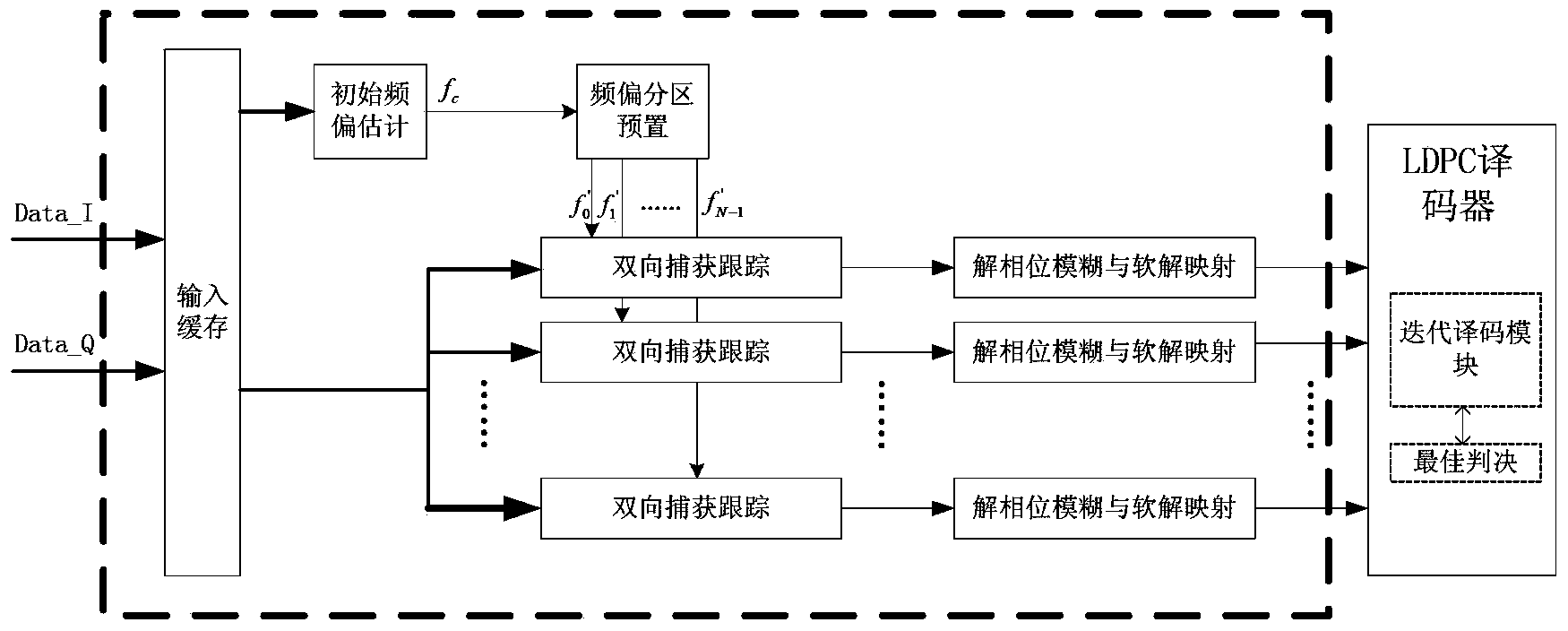Carrier synchronizer for demodulating low signal-to-noise ratio burst signals
A burst signal, low signal-to-noise ratio technology, applied in the field of carrier synchronizer, can solve the problem of high implementation complexity, achieve the effect of expanding application range, improving estimation accuracy, and reducing length requirements
- Summary
- Abstract
- Description
- Claims
- Application Information
AI Technical Summary
Problems solved by technology
Method used
Image
Examples
Embodiment
[0051] Assuming that a burst communication system has an information rate of 2Mbps, adopts LDPC coding with a code rate of 0.5, and the maximum frequency deviation during transmission is 10KHz. The burst frame structure is 128 preambles, 32 unique words and 2048 effective information, the modulation method is QPSK, and the working signal-to-noise ratio Eb / No is required to be 0dB. In order to reduce the cycle skip probability, the normalized loop bandwidth of the Costas ring is 0.004. The specific steps of using the present invention to perform carrier synchronization are as follows:
[0052] 1) Store the input information after symbol synchronization in the input buffer;
[0053] 2) Use the data-assisted algorithm to estimate the normalized initial frequency offset value fc using 128 leading headers;
[0054] 3) When the signal-to-noise ratio Eb / No is 0dB, after the initial frequency offset is estimated, the possible normalized residual frequency offset range is [-0.001, 0.001], a...
PUM
 Login to View More
Login to View More Abstract
Description
Claims
Application Information
 Login to View More
Login to View More - R&D
- Intellectual Property
- Life Sciences
- Materials
- Tech Scout
- Unparalleled Data Quality
- Higher Quality Content
- 60% Fewer Hallucinations
Browse by: Latest US Patents, China's latest patents, Technical Efficacy Thesaurus, Application Domain, Technology Topic, Popular Technical Reports.
© 2025 PatSnap. All rights reserved.Legal|Privacy policy|Modern Slavery Act Transparency Statement|Sitemap|About US| Contact US: help@patsnap.com



